Direct Laser System
Laser gravure using the Direct Laser System (DLS) is an extremely fast, high-quality gravure process. The prerequisite for it is either a new steelbase or an already used and re-prepared cylinder. An electroplating process ensures the copper layer on the cylinder, which lies exactly 50µ below the desired diameter. The zinc layer of 55µ applied afterwards is then milled to the desired diameter with a special surface roughness. In the Direct Laser System the image transfer takes place without contact using a laser beam directly into the cylinder’s zinc surface. 70,000 cells can be laser processed per second. Finally, the laser cylinder is chromed for protection purposes. The form of the laser cell is divided into conventional and half-autotypical: cells with a fixed transverse diagonal which nonetheless have a variable depth are known as conventional. If the cells vary both in the transverse diagonal and in depth, these are called half-autotypical. The diameter of the laser beam, the laser energy and the process are decisive for the shape, size and depth of the cell. A distinction is made here between a dot screen and masterscreen. The dot screen, with one shot per cell, is the technique commonly used in the industry. The high-quality masterscreen technology, with seven shots per cell, ensures better resolution for a higher printing quality. The masterscreen is usually used for special applications e.g. extremely fine text. The effective line screen on the cylinder is around 40-160 l/cm (dot screen and masterscreen), whereby the actual screen resolution required for this is between 100-400 l/cm. In addition to the higher resolution, an outline can be lasered in the masterscreen. The tobacco and security printing industries in particular, but also the flexible packaging market, greatly appreciate the high-quality laser technology. The external appearance of a laser cylinder does not differ from that of an electro-mechanically engraved cylinder. What is decisive are the much superior printing results and the significantly faster laser process. Laser cylinders also offer better ink transfer, which guarantees excellent quality on non-standard substrates, e.g. aluminium foil or uncoated paper, in particular. Further cost savings can be achieved through the lower ink consumption.
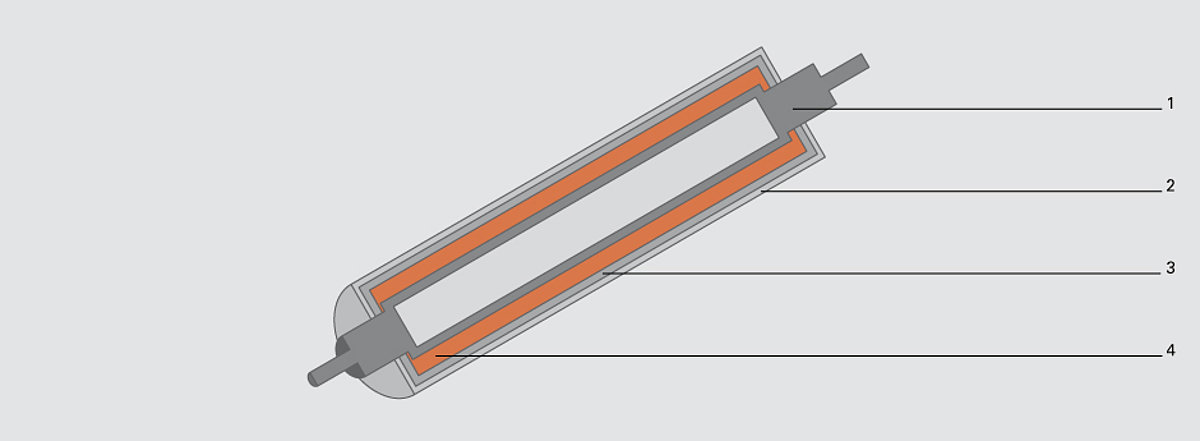
1 Steelbase 30 mm, 2 Chrome 7 µ, 3 Zinc 50 µ, 4 Copper 0,25 mm
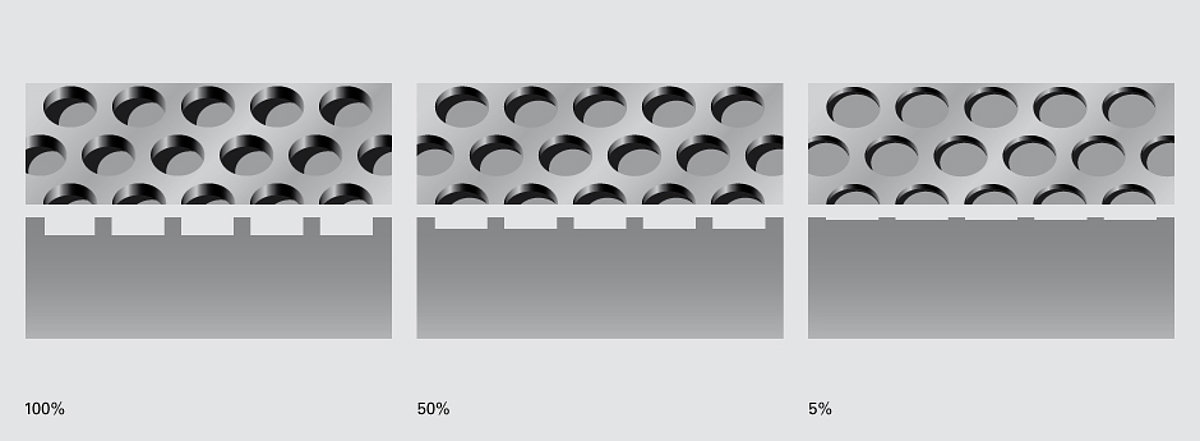
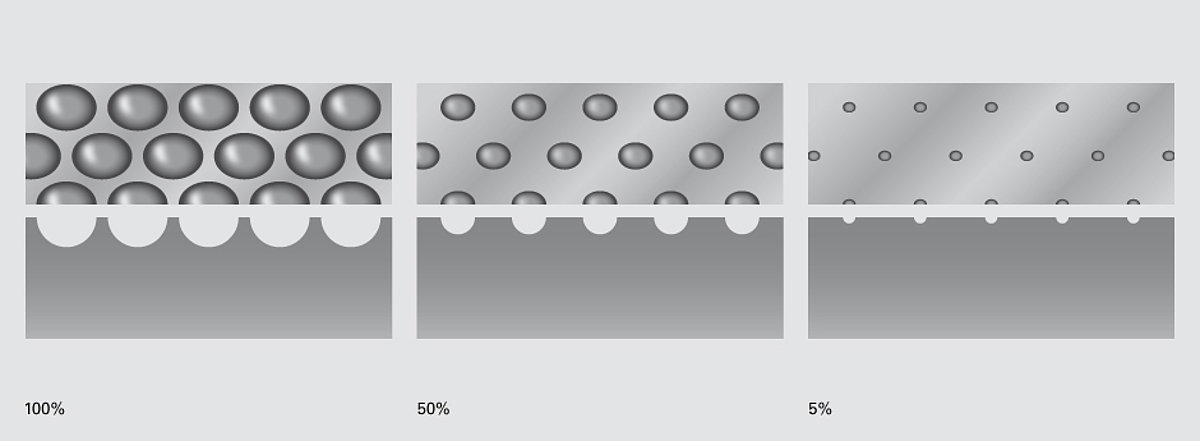
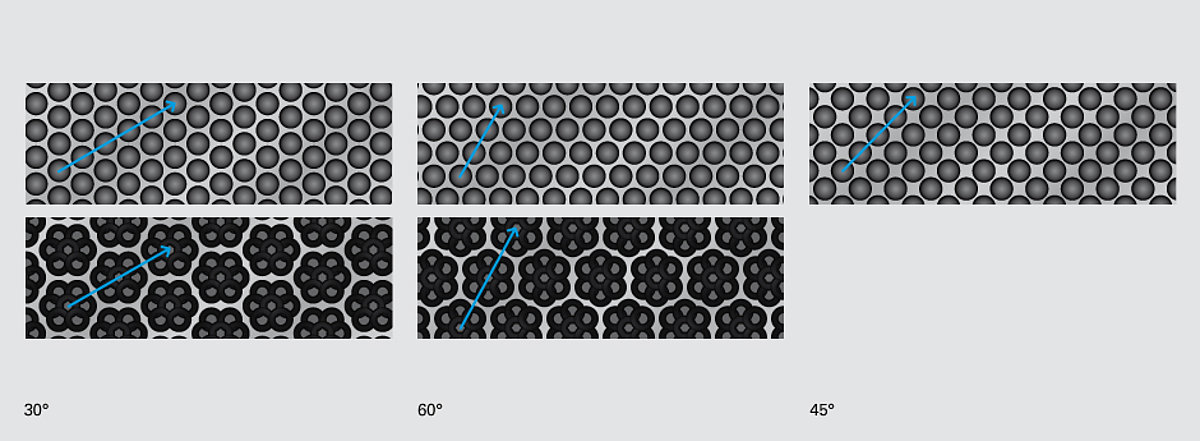
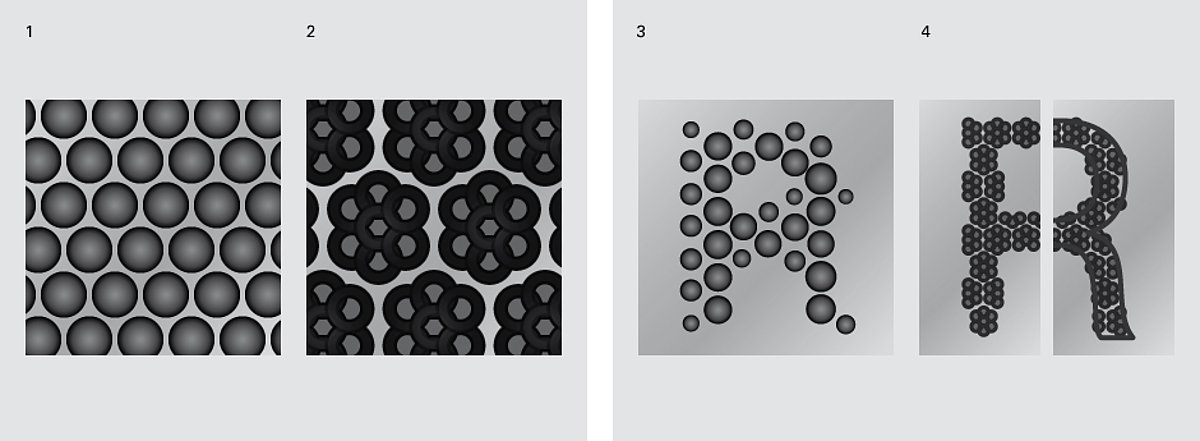
right: Engraved letter (masterscreen) without and with outline
